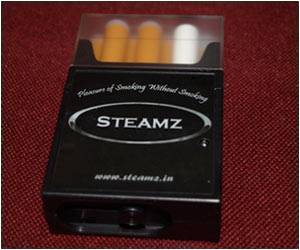The sooner someone is treated for stroke, the better chance they have for survival and an improved recovery.

‘Stroke patients who are brought to the hospital in an ambulance with a CT scanner and telemedicine capabilities are evaluated and treated faster.’





"The sooner someone is treated for stroke, the better chance they have for survival and an improved recovery," said study author Muhammad S. Hussain of the Cleveland Clinic in Cleveland, Ohio, and member of the American Academy of Neurology. "Telemedicine makes it possible for a neurologist to see a stroke patient, and possibly treat them, before they even arrive at the hospital."
To improve treatment times, the Cleveland Clinic created a mobile stroke treatment unit, an ambulance equipped with a mobile CT scanner and telemedicine technology. It was first used in the city of Cleveland in 2014. The medical team on board includes a registered nurse, a paramedic, an emergency medical technician and a CT technologist.
For the study, researchers compared the stroke care of the first 100 people transported by the mobile stroke unit to the stroke care of 53 people brought to the hospital by a regular ambulance in 2014. People in both groups had similar stroke severity.
A vascular neurologist evaluated each person transported in the mobile stroke unit on the way to the hospital. A neuroradiologist and vascular neurologist also assessed CT scan images taken during the ride.
Researchers found there was a significant reduction in the time from the initial call for help to getting a CT scan, an average of 33 minutes for those transported by the mobile stroke unit compared to 56 minutes for those transported by regular ambulance. Average time from the first call for help to receiving clot-busting drugs was 56 minutes compared to 94 minutes. Average time between arrival at hospital to treatment with clot-busting drugs was 32 minutes compared to 58 minutes. Average time from the start of symptoms to receiving clot-busting drugs was 97 minutes compared to 123 minutes.
Advertisement
"Overall, people transported by the mobile stroke unit received clot-busting drugs nearly 40 minutes faster," said Hussain. "Also, 44% of them received clot-busting drugs within an hour-and-a-half, compared to just 8% of other patients. More people were given the treatment they needed, faster."
Advertisement
In an accompanying editorial, Andrew M. Southerland of the University of Virginia Health System in Charlottesville and member of the American Academy of Neurology, said, "Ongoing efforts are needed to streamline mobile stroke unit costs and efficiency before achieving road-readiness for widespread health system deployment."
Source-Eurekalert















